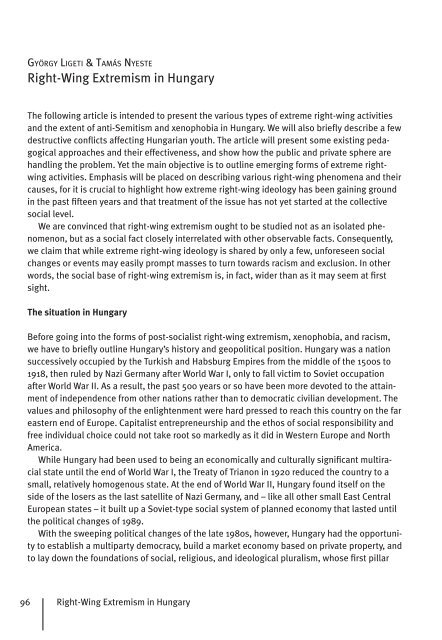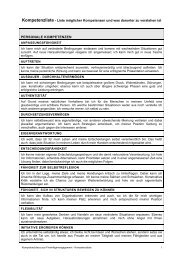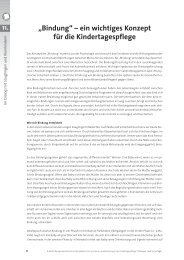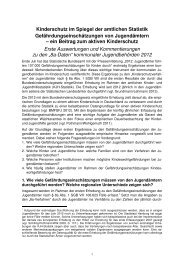Prevention of Right-Wing Extremism, Xenophobia and Racism in ...
Prevention of Right-Wing Extremism, Xenophobia and Racism in ...
Prevention of Right-Wing Extremism, Xenophobia and Racism in ...
Create successful ePaper yourself
Turn your PDF publications into a flip-book with our unique Google optimized e-Paper software.
GYÖRGY LIGETI & TAMÁS NYESTE<br />
<strong>Right</strong>-<strong>W<strong>in</strong>g</strong> <strong>Extremism</strong> <strong>in</strong> Hungary<br />
The follow<strong>in</strong>g article is <strong>in</strong>tended to present the various types <strong>of</strong> extreme right-w<strong>in</strong>g activities<br />
<strong>and</strong> the extent <strong>of</strong> anti-Semitism <strong>and</strong> xenophobia <strong>in</strong> Hungary. We will also briefl y describe a few<br />
destructive confl icts affect<strong>in</strong>g Hungarian youth. The article will present some exist<strong>in</strong>g peda-<br />
gogical approaches <strong>and</strong> their effectiveness, <strong>and</strong> show how the public <strong>and</strong> private sphere are<br />
h<strong>and</strong>l<strong>in</strong>g the problem. Yet the ma<strong>in</strong> objective is to outl<strong>in</strong>e emerg<strong>in</strong>g forms <strong>of</strong> extreme right-<br />
w<strong>in</strong>g activities. Emphasis will be placed on describ<strong>in</strong>g various right-w<strong>in</strong>g phenomena <strong>and</strong> their<br />
causes, for it is crucial to highlight how extreme right-w<strong>in</strong>g ideology has been ga<strong>in</strong><strong>in</strong>g ground<br />
<strong>in</strong> the past fi fteen years <strong>and</strong> that treatment <strong>of</strong> the issue has not yet started at the collective<br />
social level.<br />
We are conv<strong>in</strong>ced that right-w<strong>in</strong>g extremism ought to be studied not as an isolated phe- phe-<br />
nomenon, but as a social fact closely <strong>in</strong>terrelated with other observable facts. Consequently,<br />
we claim that while extreme right-w<strong>in</strong>g ideology is shared by only a few, unforeseen social<br />
changes or events may easily prompt masses to turn towards racism <strong>and</strong> exclusion. In other<br />
words, the social base <strong>of</strong> right-w<strong>in</strong>g extremism is, <strong>in</strong> fact, wider than as it may seem at fi rst<br />
sight.<br />
The situation <strong>in</strong> Hungary<br />
Before go<strong>in</strong>g <strong>in</strong>to the forms <strong>of</strong> post-socialist right-w<strong>in</strong>g extremism, xenophobia, <strong>and</strong> racism,<br />
we have to briefl y outl<strong>in</strong>e Hungary’s history <strong>and</strong> geopolitical position. Hungary was a nation<br />
successively occupied by the Turkish <strong>and</strong> Habsburg Empires from the middle <strong>of</strong> the 1500s to<br />
1918, then ruled by Nazi Germany after World War I, only to fall victim to Soviet occupation<br />
after World War II. As a result, the past 500 years or so have been more devoted to the atta<strong>in</strong>-<br />
ment <strong>of</strong> <strong>in</strong>dependence from other nations rather than to democratic civilian development. The<br />
values <strong>and</strong> philosophy <strong>of</strong> the enlightenment were hard pressed to reach this country on the far<br />
eastern end <strong>of</strong> Europe. Capitalist entrepreneurship <strong>and</strong> the ethos <strong>of</strong> social responsibility <strong>and</strong><br />
free <strong>in</strong>dividual <strong>in</strong>dividual choice choice could not take root so markedly as it did <strong>in</strong> Western Europe <strong>and</strong> North<br />
America.<br />
While Hungary had been used to be<strong>in</strong>g an economically <strong>and</strong> culturally signifi cant multiramultira- cial state until the end <strong>of</strong> World War I, the Treaty <strong>of</strong> Trianon <strong>in</strong> 1920 reduced the country to a<br />
small, relatively homogenous state. At the end <strong>of</strong> World War II, Hungary found itself on the<br />
side <strong>of</strong> the losers as the last satellite <strong>of</strong> Nazi Germany, <strong>and</strong> – like all other small East Central<br />
European states – it built up a Soviet-type social system <strong>of</strong> planned economy that lasted until<br />
the political changes <strong>of</strong> 1989.<br />
With the sweep<strong>in</strong>g political changes <strong>of</strong> the late 1980s, however, Hungary had the opportuniopportuni- ty to establish a multiparty democracy, build a market economy based on private property, <strong>and</strong><br />
to lay lay down the foundations <strong>of</strong> social, religious, <strong>and</strong> ideological pluralism, whose fi rst pillar<br />
96 <strong>Right</strong>-<strong>W<strong>in</strong>g</strong> <strong>Extremism</strong> <strong>in</strong> Hungary

















